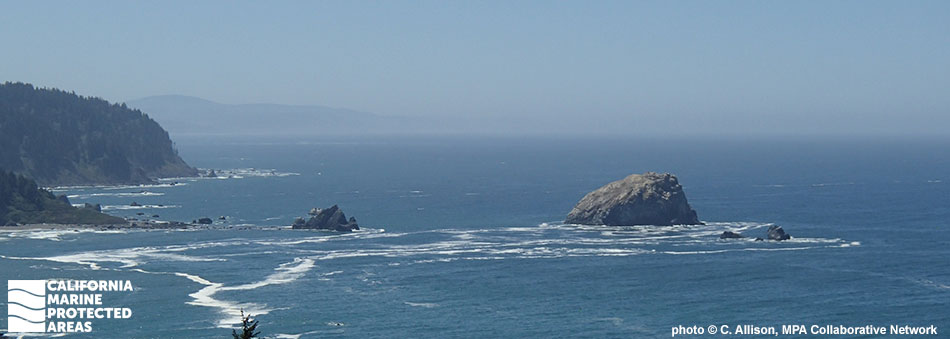
Overview
Located in rural Del Norte County between Klamath and Crescent City, False Klamath Cove is a special place with deep Native American ties and is home to a myriad of marine life. Tidepoolers, anglers, and tourists visiting the beach can witness a frenzied spectacle of birds on the impressive False Klamath Rock, located just offshore. A well-known rookery for nearly 45,000 birds, False Klamath Rock Special Closure protects at least eight different bird species. Species of special concern like tufted puffin and other seabirds like pigeon guillemot, double-crested cormorants, black oystercatchers, and common murres use the secluded sea stack for roosting and nesting.
False Klamath Rock is a special closure that protects a 300-foot buffer zone surrounding the rock from March 1 to August 31 every year. Restrictions on boating and human access help to protect the thousands of birds that nest on this prominent sea stack. Boulder fields dot the adjacent sandy beach only a few yards away from Highway 101.
Regulations
March 1 to August 31 only:
Boating and access are restricted. Except as permitted by federal law or emergency caused by hazardous weather, no vessel shall be operated or anchored from the mean high tide line to a distance of 300 ft. seaward of the mean lower low tide line of any shoreline of False Klamath Rock.
No person except employees of the California Department of Fish and Wildlife, United States Fish and Wildlife Service, National Oceanic and Atmospheric Administration, or United States Coast Guard during performance of their official duties, or unless permission is granted by the California Department of Fish and Wildlife, shall enter the area.
California Code of Regulations Title 14, Section 632(b)(5)(opens in new tab)
Quick Facts
Special Closure size: 0.03 square miles
Depth range: 0 to 46 feet
Habitat composition*:
- Rock: 0.07 square miles
- Sand/mud: Less than 0.01 square miles
*Habitat calculations are based on three-dimensional area and may exceed the total MPA area listed above.